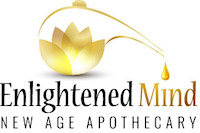Description
Cinnamon Low Alcohol (Cinnamomum cassia) has been called the spicy bark that warms the soul! Cinnamon inspired the spice trade routes, and was referenced in the Old Testament. Ah! The spicy, sweet smell of cinnamon! Everyone recognizes the familiar aroma of this common kitchen spice. Cinnamon is an exotic plant bark with a long history of both culinary and folkloric use in many countries throughout the world. Cinnamon was listed as a useful herb in Chinese literature as early as 2700 BC. It is described in the famous Chinese medical text, The Tang Materia Medica, written in 659 AD. Cinnamon also enjoys traditional use in Ayurveda , the ancient healing art of India. It is mentioned in the Hebrew Book of Moses and has been cultivated in Ceylon and Sri Lanka since 1200 AD, where much of the world’s supply is still grown. In Europe, cinnamon was regarded as a rare and precious spice. It was also used as an incense and in perfumes. According to Chamberlain, writing in France in 1887, cinnamon “possesses the greatest powers.”
Cinnamon Low Alcohol is gathered from the dried inner bark of the branches of a small, tropical, evergreen tree in the Laurel family. The bark is peeled off and as the pieces are dried, they curl up into quills. These are the common cinnamon sticks that are used in herb teas, preparations and for baking.
In Traditional Chinese folklore, cinnamon is one of the most widely used “warming” herbs. Cinnamon raises vitality, warms and stimulates.
The compounds contained in cinnamon include eugenol, cinnamic aldehyde, methyl-eugenol, tannin and mannitol, which gives cinnamon its sweet flavor. It also contains cinnzelanin and cinnzelanol.

Please consult a qualified healthcare practitioner before use, particularly if you are pregnant, nursing, or on any medications.
Keep out of reach of children.
| These statements have not been evaluated by the Food and Drug Administration.
This product is not intended to diagnose, treat, cure, or prevent any disease. |


















Reviews
There are no reviews yet.